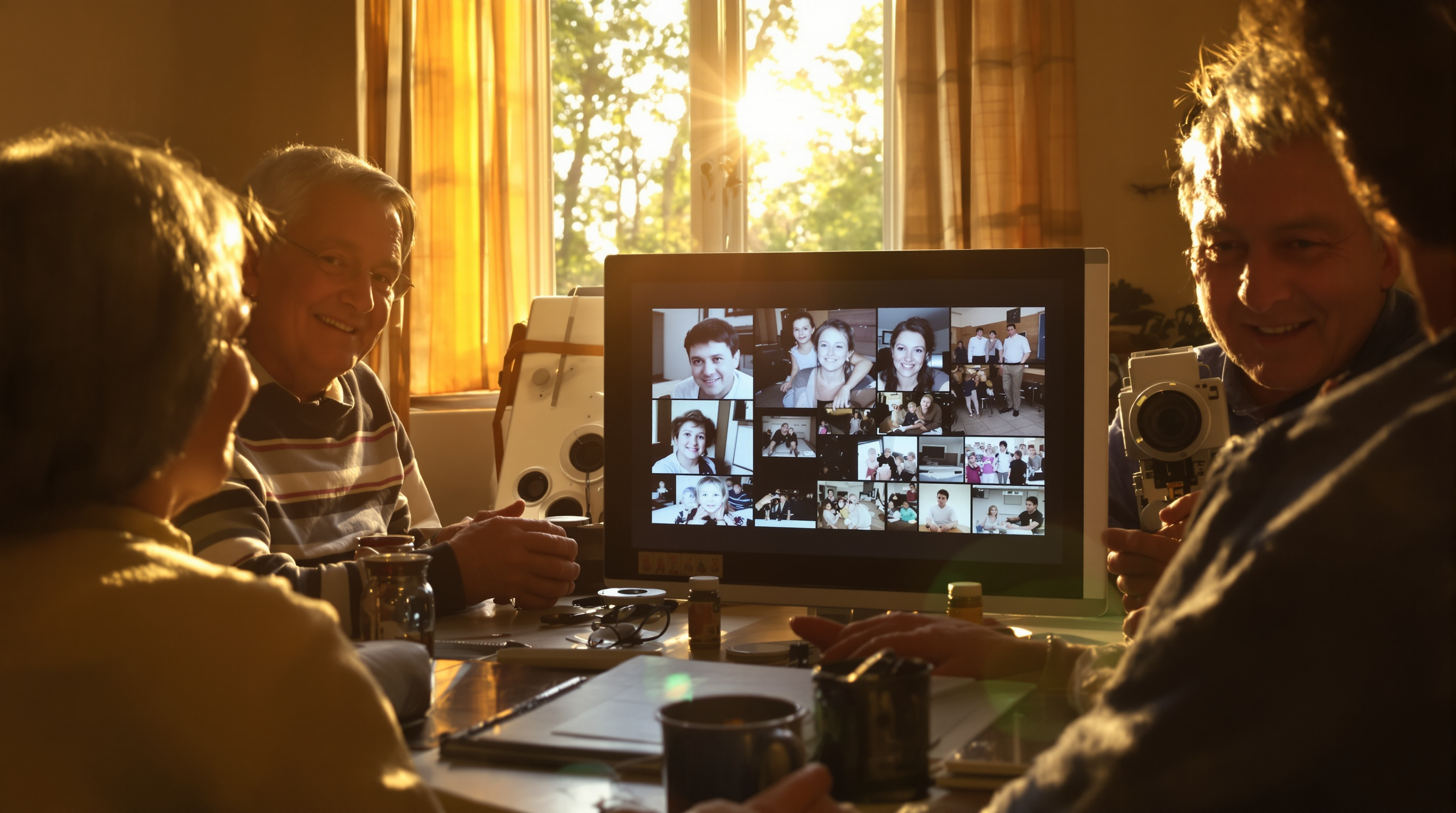Preserving Digital Legacies for Future Generations
T.K. Broecker / 19 October 2025

The Film Photography Revival: Why Analog Still Matters
Film photography has surged back in recent years—not as nostalgia, but as a deliberate choice for its distinctive aesthetic, intentional process, and tangible outcomes. From Louisville’s growing film scene to the chemistry of color stocks, analog offers something digital can’t replicate.
Why Film Photography is Making a Comeback
Film captures light differently than digital sensors, producing unique grain patterns, color rendition, and tonal ranges many consider impossible to authentically mimic with software. Since 2015, brands like Kodak, Fujifilm, and Ilford have reported renewed growth in film—especially among younger photographers raised on digital.
- • A slower, more deliberate approach encourages intention.
- • Each frame has a cost—compositions become more thoughtful.
- • Delayed gratification builds anticipation and focus.
- • Physical negatives provide archival permanence.
The beloved “film look”—halation, natural grain, and nuanced color—adds an organic, human quality that resonates emotionally beyond digital perfection. For photographers bridging capture and output, maintaining that character through the shooting and printing process is key to preserving the essence of film in the final print.
Understanding 35mm Film Developing
Developing transforms exposed film into visible images through time-tested chemistry—a practical necessity and a meditative ritual dating back to the early 20th century.
Standard Color (C-41) Steps
- Development: Exposed silver halides convert to metallic silver while color dyes form.
- Bleaching: Developed silver is removed, leaving dye images.
- Fixing: Remaining unexposed silver halides are dissolved.
- Stabilizing/Washing: Residual chemistry is cleared and the image preserved.
Black & white is simpler—typically developer, stop bath, and fixer. Home developing is accessible with kits that can bring costs to roughly $2–$3 per roll versus $10–$15 at a lab.
In the darkroom, working under safelights and watching images appear in trays offers a tactile connection that digital workflows can’t match. It’s a process rooted in the same principles explored in photo printing services that bring digital memories to life —transforming captured moments into lasting, physical keepsakes.
Color Film vs. Digital Imaging
Film’s color arises from layered light-sensitive emulsions with silver halides and dye couplers responding to different wavelengths. This chemistry produces stock-specific palettes and highlight behavior distinct from digital.
- • Color Depth: Analog gradations are especially smooth in highlights and shadows.
- • Color Palette: Stocks have signature looks—Kodak Portra (warm, flattering skin tones) vs. Fuji Superia/Velvia (cooler or highly saturated landscapes).
- • Highlight Roll-off: Film tends to taper gracefully where digital may clip abruptly.
Film photographers often choose stocks to match mood at capture—unlike the common digital approach of shooting neutral for later manipulation. This careful attention to tone and character echoes the principles of production detail described in The Art and Science of Production Excellence .
The Thriving Film Community & Practical Tips
Louisville and many other cities host vibrant analog communities—camera shops, darkroom co-ops, and regular meetups. Hashtags like #filmisnotdead and #shootfilmnotdigital connect shooters nationwide. For more inspiration on blending traditional film craft with modern output, explore the Print Refinery Blog .
Getting Started
- Start with versatile films like Kodak Gold 200 or Ilford HP5 Plus.
- Learn your camera’s meter or carry a handheld meter.
- Use the Sunny 16 rule: in bright sun, set shutter to 1/ISO at f/16.
- Overexpose color negative slightly (⅓–1 stop) rather than underexpose.
- Keep exposure notes to accelerate learning.
Reliable Vintage Bodies
- Canon AE-1
- Pentax K1000
- Olympus OM-10
Often $100–$200 in working condition; many remain fully functional after decades.
Conclusion: The Enduring Appeal of Analog
The film revival reflects a desire for tactile experiences and authentic craft. Beyond nostalgia, film delivers a distinctive aesthetic, a mindful workflow, and a physical link to our visual history. Whether in Louisville’s community or darkrooms worldwide, analog isn’t a rejection of progress—it’s a thoughtful reclamation of what remains valuable in traditional photographic processes.